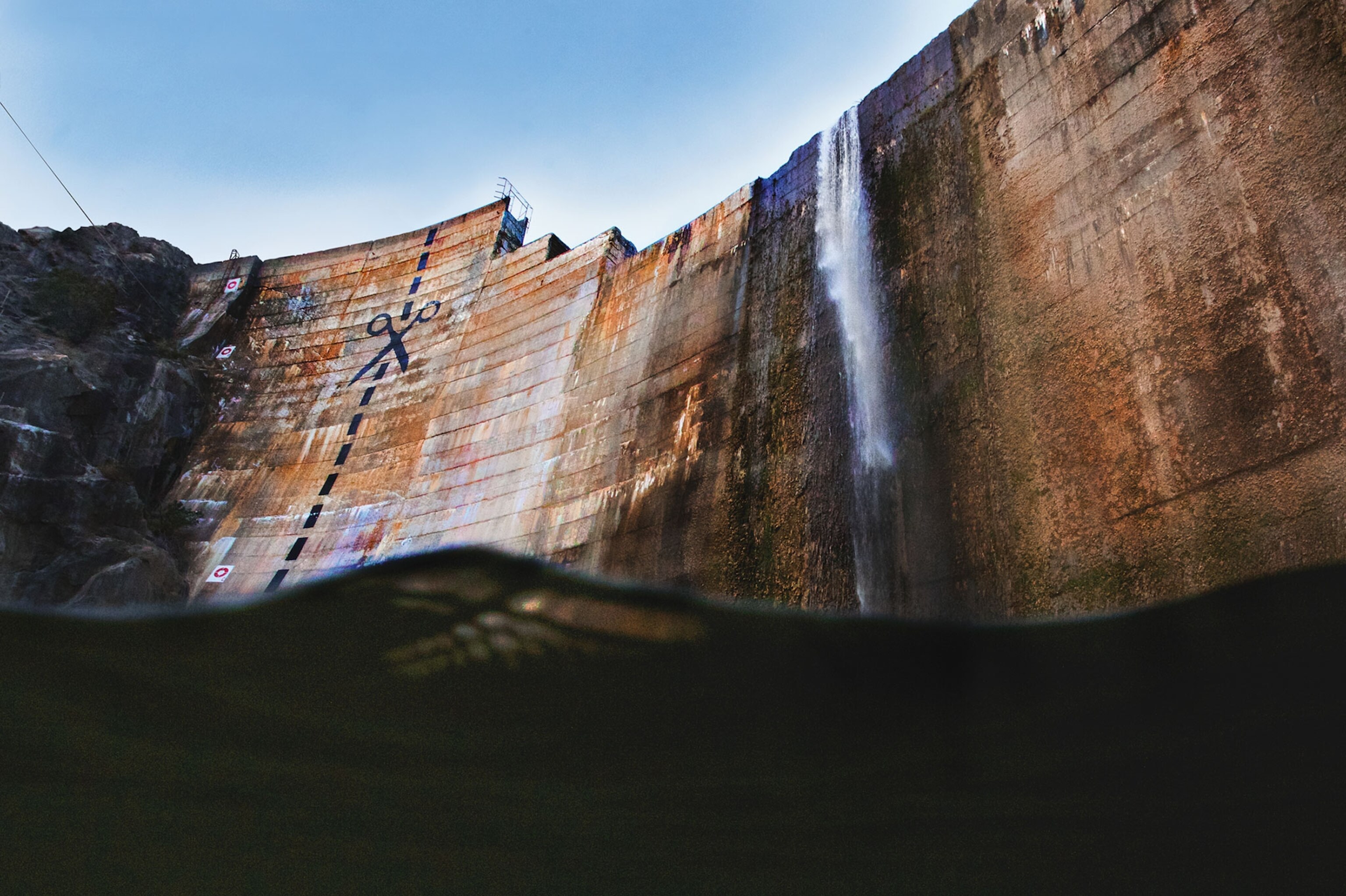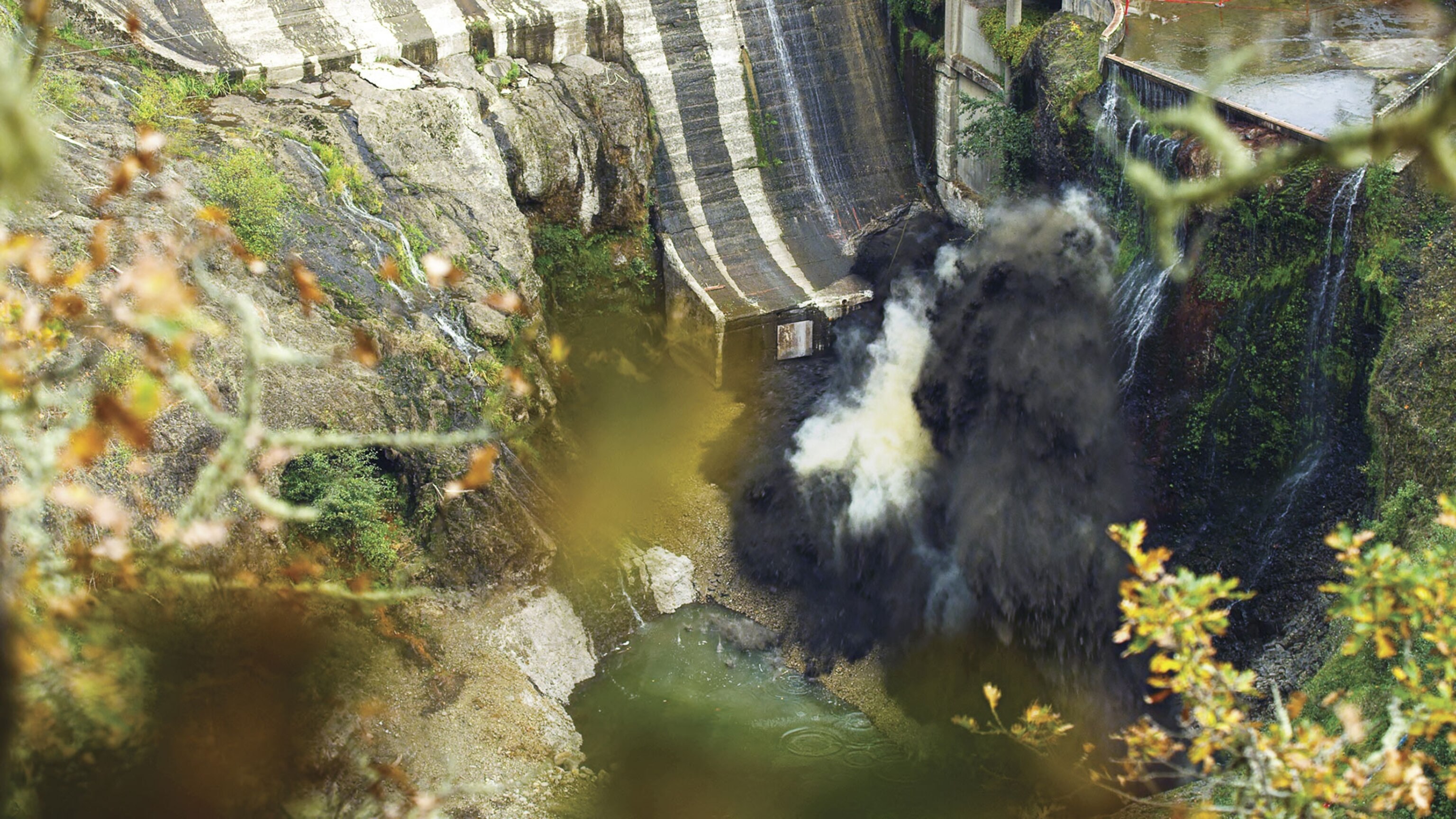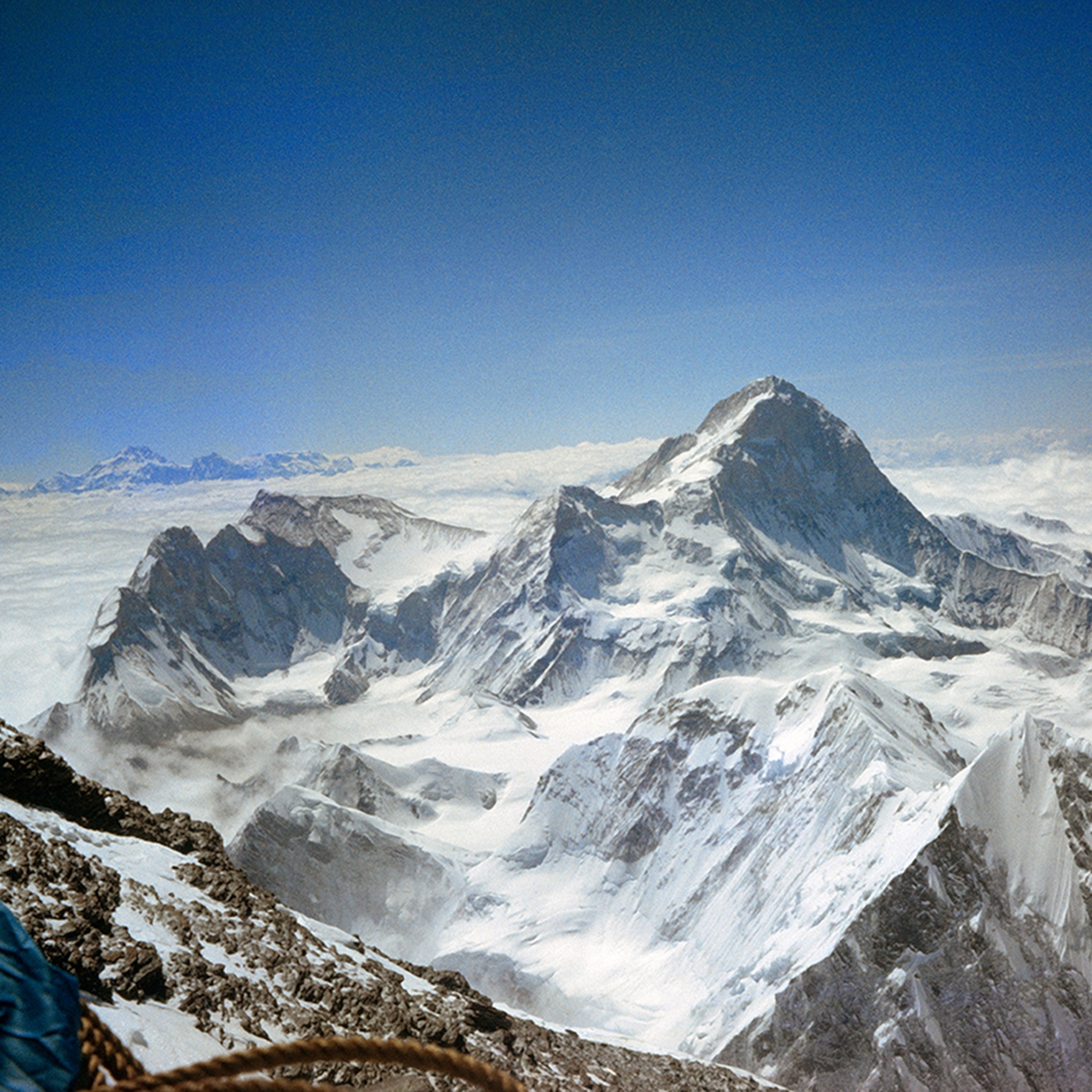
This Man is Hooked on Freeing Western Rivers from Deadbeat Dams
DamNation producer Matt Stoecker gives an update on the fight to demolish the United States' derelict dams and restore fish-friendly watersheds.
As a kid, Matt Stoecker loved to explore and fish in the clear-flowing creek running through his hometown of Portola Valley, California. One day, he hiked far downstream and saw the waters wend into a stagnant, brown reservoir formed by the Searsville Dam. Walking around to face the massive structure, Stoecker watched a huge silver fish—“the size of my arm”—break the surface of the pool in front the dam. The steelhead leapt five feet in the air, smashed its head against the concrete wall, and fell back into the water.
Even as a child, “I knew something was wrong. I was mad,” Stoecker says. “I still feel all of these emotions recalling that determined trout unable to get home.”
Stoecker, an ecologist and 2015 National Geographic Adventurer of the Year, now fights to tear down Searsville Dam and other “deadbeat dams” across the western U.S. The movement was illustrated by the award-winning 2014 documentary DamNation, which he produced with Felt Soul Media's Ben Knight and Travis Rummel and Patagonia. Stoecker has shepherded recent negotiations and agreements to remove several dams over the next few years, including Lagunita Dam, also owned by Stanford University, and Matilija Dam in Ventura County, California.
Scientific evidence shows that ecosystems can rebound once dams are removed, as seen recently in the recovery of Washington State’s Elwha River after the Glines Canyon Dam was removed in August 2014, the largest dam removal project in U.S. history. The free-swimming fish bring nutrients from the ocean to the inland watershed and spur the resurgence of rivers, wetlands, and forests where there were artificial lakes. “Steelhead swam through the giant hole blasted in the base of Condit Dam on the White Salmon River before the bulk of the dam was even removed,” Stoecker says. “With each new dam that is taken down, it become increasingly clear that he benefits from dam removal are instantaneous, far reaching, and lasting.” And he argues that doing nothing is not an option.

Stoecker calls steelhead and salmon the “ultimate explorers” of the fish world. After leaving the American rivers where they were born, they swim thousands of miles across the ocean. Scientists think that they navigate by the sun and moon and Earth’s magnetic fields. A few years later, the fish swim homeward and sniff out their ancestral rivers based on the unique chemistry of its rocks, water, sediment, and vegetation, a mix imprinted on the fish’s brains when they were still tiny fry. In rivers where dams have been removed, fish naturally reseed the waters, even if the salmon and trout runs had been blocked for decades.
Healthy fish runs were an afterthought during America’s golden age of dam construction in the mid-20th century. Once considered feats of American engineering, dams provided hydropower, flood control, water resources, and recreation opportunities for western communities. Cities rose in the desert Southwest, farmers irrigated vast fields, and merchants shipped goods by river. Stoecker says that new technologies and climate change have rendered thousands of existing dams, big and small, obsolete—and worse, the dams stand in the way of healthy watersheds.
“We have better alternatives now,” Stoecker says. “We need to get with the program.”
Searsville Dam and the Matilija Dam near Santa Barbara illustrate the ecological damage of deadbeat dams. Stoecker is driving efforts to demolish both.
Built in 1892, the Searsville Dam provided water to the surrounding communities. Stanford University assumed ownership in 1919. Today, silt buildup has reduced the reservoir’s capacity by 90 percent and it no longer provides drinking water. Yet the 65-foot-tall dam still prevents the steelhead, a threatened species, from swimming upstream to breed.
“These fish were fighting extinction and couldn’t return home to spawn in the creek I’d grown up on,” says Stoecker, who is the director of the advocacy group Beyond Searsville Dam. “I felt a desire and obligation to fix this problem, to remove this dam, to welcome the annual return of steelhead back to their home stream.”
In May, Stanford University announced its preference for restoring the watershed around the structure. The proposal would construct a tunnel at its base to release the built-up sediment downstream, restoring a fraction of the river’s flow while leaving the dam in place, at least for the time being. An alternate plan would let the reservoir fill completely with silt, build new wetlands and stream channels into the sediment, and install fish ladders for steelhead migration.
Stoecker still argues for total demolition and natural watershed revival. He and a coalition of supporters “are still putting pressure on Stanford to do the right thing, practice the environmental stewardship lessons they teach, and remove this unnecessary and destructive dam,” he says.
The Matilija Dam—made famous in 2011 by activists who painted scissors and a dotted line down its face—presents a similar problem. The 69-year-old embankment on a tributary of the Ventura River, originally built for water storage and flood control, is “full of silt, and it’s a public safety hazard,” Stoecker says.
After two decades of negotiations, stakeholders are designing the final demolition plans and raising bridges downstream to clear the future water level. The free-flowing river should replenish sand-starved coastlines and bring back traditional steelhead spawning grounds (the dam’s original design didn’t include fish passage). In addition to those two objectives, Stoecker says the removal will eliminate potent methane emissions and water evaporation from the reservoir, revive historic landmarks and trails submerged by the dam, and improve water quality and flow downstream.
It will be a few more years until they’re ready to detonate explosives, Stoecker says. “We’re shooting for 2020—that’s when the concrete will fly!”

- National Geographic Expeditions
Despite the thrill of pushing the button on a pile of TNT, dam removal is a tedious, years-long process, Stoecker says. Success depends on the cooperation of groups that don’t always see eye to eye, including federal and local agencies, private landowners, public utility companies, and environmentalists. “With every project there are seemingly endless delays, misinformation to correct, people resisting any change, and efforts to dismiss more effective alternatives to meet our water, flood protection, and energy needs.”
He admits that staying motivated over the long haul can be a challenge. “You have to take breaks, reenergize, and remind yourself what you are working to achieve. I like diving in and really getting to know the watershed and wildlife impacted by a dam; snorkeling with the fish, rock hopping up headwater streams, studying old maps, reading about the history, mountain biking trails along the ridges and valleys. The more I immerse myself in a watershed, the more I feel a connection, an obligation, and motivation to undo the widespread damage caused by a dam.”
Recent removal projects on much larger dams suggest that watershed restoration efforts will meet quickly with success. In 2011, officials in Olympic National Park began a three-year project to dismantle the Elwha and Glines Canyon dams on the 45-mile Elwha River, which had blocked sediment flow and salmon for almost a century. Within a year of the project’s completion, fish had begun repopulating the river and backed-up silt had flowed to the river’s mouth, where it belonged.
“While making the documentary DamNation, I was snorkeling and filming huge Chinook salmon trapped in a pool below Elwha Dam,” Stoecker says. “After the dam was removed, co-producer Rummel and I returned to film at the nearly invisible former dam site. We cheered with arms raised overhead as massive Chinook launched through the air over a cascade where the dam once stood, and swam upstream to their ancestral home that hadn’t seen them for over a century.
“Nothing in my professional career has been more rewarding than witnessing these barriers come down and watching a river, its wildlife and its communities reconnect with each other,” he adds. “[It’s] like going back in time and also seeing a better future.”







